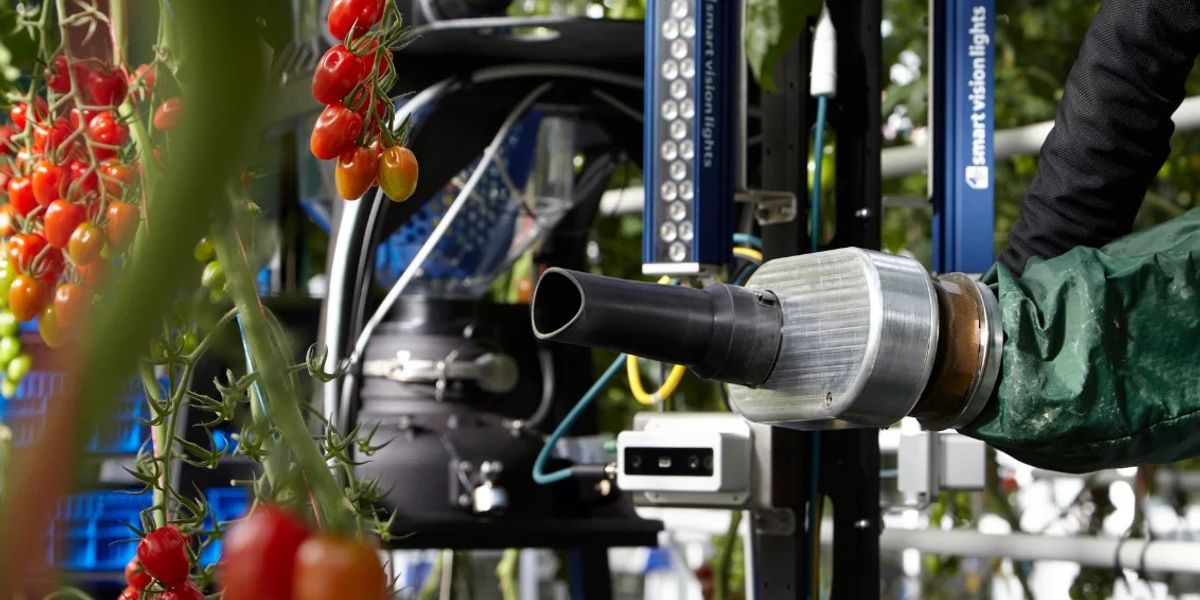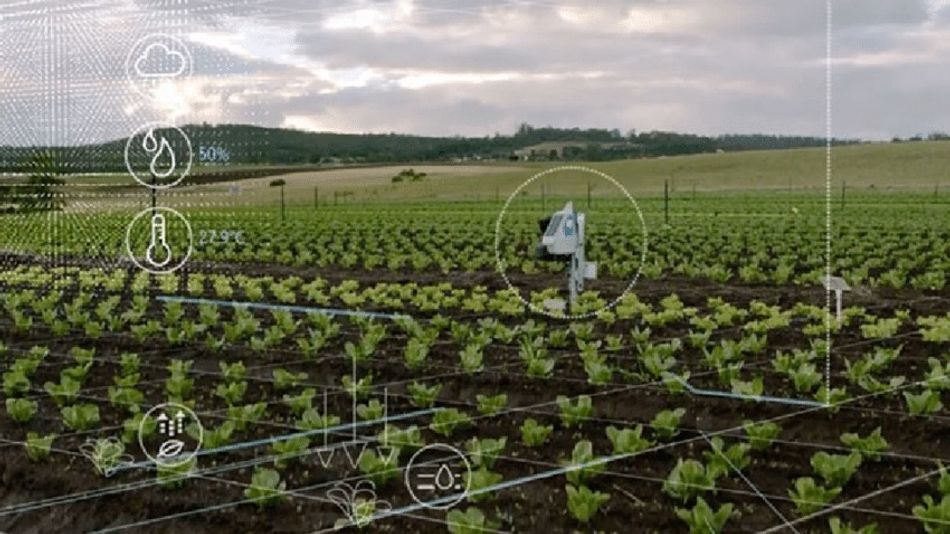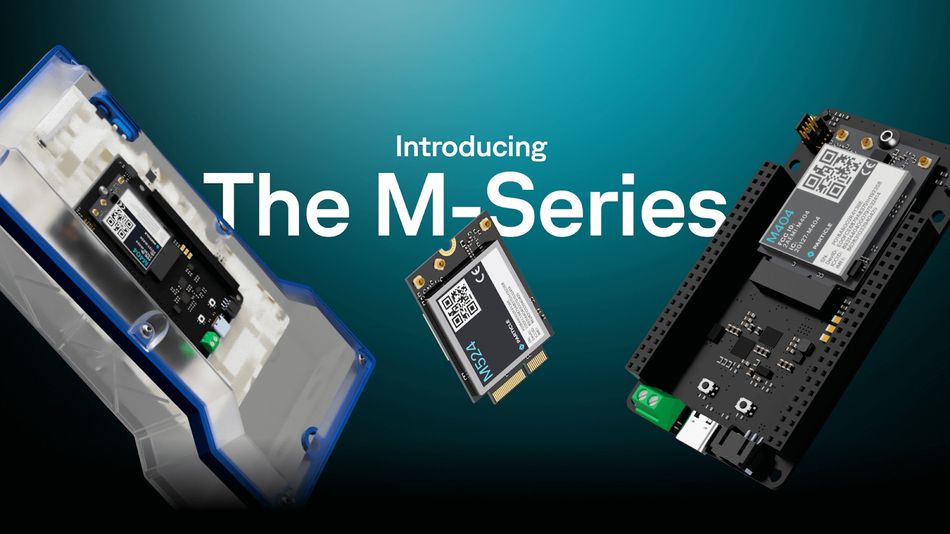Unearthing the Potential of Precision Agriculture

Explore the transformative power of precision agriculture, highlighting innovations like Particle's M-Series and the future of sustainable farming. Dive into the evolution, technologies, and trends shaping tomorrow's agriculture.
Webinar: Unlocking Continuous Connectivity with Particle's M-Series ProductsDate: July 11, 2024 Overview: Join us for an informative webinar to explore the capabilities and applications of Particle.io's M-Series products. Designed to provide seamless and continuous connectivity, the M-Series is valuable for IoT developers and companies looking to enhance their device network reliability and efficiency. |
Precision agriculture represents a pivotal shift in farming practices, marked by an era of technological sophistication to enhance efficiency and sustainability. This approach leverages advanced technologies to optimize field-level management, tailoring farming practices to the specific needs of crops, thereby significantly reducing the environmental footprint.
By integrating tools like satellite and aerial imagery, weather prediction, variable rate fertilizer application, and crop health indicators, precision agriculture enables a more precise allocation of resources. This boosts crop science by closely aligning farming practices with crop needs and enhances environmental protection by minimizing risks and the ecological impact of farming.
The backbone of precision agriculture includes technologies such as Geographic Information Systems (GIS), Global Positioning Systems (GPS), and remote sensing, enabling detailed analysis and decision-making based on real-time data. These technologies collectively contribute to a farming system that is not only more productive and sustainable but also economically viable.
By embracing precision agriculture, farmers gain access to a wealth of information that aids in record-keeping, decision-making, traceability, marketing, and improving the quality of farm products. This article will cover technological innovations in precision agriculture, current challenges, and the impact of these innovations in the coming years.
The Roots of Precision Agriculture
The journey from traditional to precision agriculture is a testament to human ingenuity and the quest for sustainability in food production. Precision agriculture, or the use of advanced technologies and data analysis to improve the efficiency and output of farming practices, marks a significant departure from the more generalized approaches of the past.
Historically, farming methods evolved through mechanization and the Green Revolution, which introduced genetic modification to increase yields. However, these advances often overlooked the nuanced needs of individual fields or crops. The inception of precision agriculture in the early 1980s ushered in a new era, focusing on optimizing every aspect of the farming process. This was facilitated by the development and adoption of Global Positioning System (GPS) and Geographic Information System (GIS) technologies, allowing for more precise field measurements and management strategies. Early adopters used Variable Rate Application (VRA) to tailor applications of fertilizers and pesticides, significantly improving efficiency and reducing waste.4,5
As the concept matured, precision agriculture began incorporating various technologies, including remote sensing, variable rate technology, and yield monitoring systems. These tools gave farmers unprecedented control over their operations, enabling them to respond to specific conditions within their fields in real-time, thus reducing costs and improving yields.
Year | Event |
11,000 BC | Domestication of cattle, goats, sheep, and pigs |
9,200 BC | Fig trees planted in Jordan |
8,000 BC | Squash cultivation occurs in Mexico |
7,000 BC | Plant domestication in Syria: wheat, barley |
3,500 BC | Corn first domesticated |
1701 AD | Jethro Tull invents the seed drill |
1797 AD | The first cast-iron plow patented |
1877 AD | Deere & Mansur planter launched |
1913 AD | The first gas-powered tractor called the Waterloo Boy |
1935 AD | Four-Row No. 450 Planter released by Deere & Mansur |
1992 AD | The first use of RTK for machine guidance |
1993 AD | Real-time kinematics (RTK) was first tested by Army Corp. |
2012 AD | RTK service is offered via satellite and internet |
The Technologies Cultivating Growth
The backbone of precision agriculture is a suite of interconnected technologies that collect, analyze, and apply data in previously impossible ways. The Internet of Things (IoT) is central to this technological ecosystem, integrating sensors, devices, and equipment to monitor and manage agricultural operations seamlessly.
1. IoT and Sensors: At the heart of precision agriculture, IoT devices and sensors collect data on soil conditions, crop health, weather, and more. This data enables farmers to make informed decisions about planting, watering, and harvesting. Sensors can detect various variables, from soil moisture and nutrient levels to crop health indicators, facilitating targeted interventions that conserve resources and maximize yields.
2. Drones: Unmanned Aerial Vehicles (UAVs), or drones, play a critical role in precision agriculture by providing detailed aerial imagery of crops and fields. Drones can monitor crop health, identify pest and weed infestations, and assess crop damage precisely. This aerial perspective is invaluable for large-scale monitoring and targeted treatment, reducing the need for broad-spectrum pesticide use and helping to manage resources more efficiently.
3. GPS Technology: GPS technology enables precise mapping and monitoring of fields, allowing for tailored agricultural practices down to the square meter. It underpins various precision agriculture applications, from tractor guidance systems, which reduce overlap and gaps in planting, spraying, and fertilizing, to yield monitoring, which tracks production across different parts of a field to inform future practices.
Integrating these technologies into the agricultural sector has transformed how food is grown, making achieving higher yields with lower environmental impacts possible. As we look to the future, the continued evolution and adoption of precision agriculture technologies promise even greater efficiencies and sustainability in farming, laying the groundwork for a new era of agricultural innovation.1,4,5
Integrating Particle's M-Series for Enhanced Connectivity in Precision Agriculture
The advent of Particle's M-Series marks a significant advancement in IoT connectivity, particularly in precision agriculture. These products are engineered to tackle the unique challenges of agricultural environments, ensuring reliable, global connectivity for remote sensors and devices, which are essential for real-time data collection and management of crops and soil.
Introduction to Particle's M-Series
Particle's M-Series embodies a cutting-edge solution for the pervasive connectivity challenges in precision agriculture. With its introduction, the M-Series aims to offer a robust framework for IoT devices, enabling seamless communication even in the most remote or challenging agricultural settings.6
Enhanced Connectivity with the M-Series
The M-Series modules, including the M-SoM and Muon, leverage multi-radio networking, allowing for diverse and redundant network connections within a single product.This feature is crucial in agricultural settings, where connectivity needs vary dramatically across different environments. By supporting multiple wireless networks, including Wi-Fi, cellular, satellite, and LoRaWAN, the M-Series ensures that devices can maintain connectivity through the most suitable network available, whether in open fields or enclosed spaces like greenhouses.6
Moreover, integrating non-terrestrial networks (NTN) with traditional terrestrial networks via the M-Series significantly expands the scope of IoT connectivity. This approach addresses the gap in coverage in remote or challenging terrains by leveraging satellites and aerial platforms to provide wireless connectivity, thus enabling seamless IoT operations across all agricultural landscapes.7
Benefits of Precision Agriculture
The use of Particle's M-Series in precision agriculture brings forth several benefits:
Improved Data Accuracy: With reliable connectivity, data collected from sensors regarding soil moisture, nutrient levels, and crop health is timely and accurate, allowing for precise monitoring and management.
Operational Efficiency: Maintaining constant communication with remote sensors and devices enables automated and efficient agricultural operations management, reducing manual labor and minimizing the scope for error.
Enhanced Decision-Making Processes: Real-time data and insights facilitate informed decision-making, allowing farmers and agricultural managers to take timely actions that optimize crop yield and resource use.
By harnessing the power of the M-Series, precision agriculture can reach new heights of efficiency and productivity. The technology's ability to bridge connectivity gaps in diverse agricultural environments ensures that the benefits of IoT can be fully realized, driving the future of farming.
Precision Agriculture in Practice
Precision agriculture leverages advanced technologies to increase crop yields, improve farm efficiency, and reduce environmental impacts. Through integrating IoT (Internet of Things) solutions, such as those offered by Particle, farmers and agricultural companies are revolutionizing how crops are managed and cultivated. Particle's platform facilitates the deployment of connected devices across various agricultural settings, enabling real-time data collection and analysis. This data-driven approach allows for more precise farming practices, from soil moisture monitoring to pest management and crop health assessment.
For example, Particle's technology has innovative use cases in diverse agricultural projects:
Smart Irrigation Systems: By utilizing soil moisture sensors connected through Particle's network, farmers can optimize their watering schedules, significantly reducing water usage while ensuring plants receive the necessary hydration.
Crop Monitoring and Management: By deploying drones equipped with sensors and connected via Particle, farmers can monitor crop health growth rates and detect potential issues early on, allowing for timely interventions.
Livestock Tracking and Management: With Particle's solutions, livestock farmers can monitor the health and location of their animals in real-time, improving animal welfare and operational efficiency.
These applications demonstrate the versatility and impact of IoT technologies in agriculture, highlighting the potential for significant improvements in sustainability and productivity through precision farming practices.

Overcoming the Weeds: Challenges and Solutions
The adoption of precision agriculture technologies faces several challenges, including high initial costs, technical complexity, and connectivity issues in rural areas. However, Particle's M-Series offers a promising solution to overcome some of these barriers, particularly the connectivity issue.
Connectivity is critical for the success of IoT applications in agriculture, where farms are often located in remote areas with limited access to traditional internet services. Particle's M-Series is designed to address this challenge by providing reliable cellular connectivity options. This ensures that IoT devices deployed in the field remain connected, enabling continuous data transmission and real-time monitoring.
The M-Series devices support a wide range of cellular networks, including LTE M1 and NB-IoT, specifically designed for IoT applications requiring low bandwidth and power efficiency. This makes them ideal for agriculture, where devices must often operate on battery power for extended periods and cover large, remote areas.6,7,10
By leveraging Particle's M-Series for connectivity, agricultural businesses can effectively implement precision farming technologies, overcoming the "weeds" of technical and infrastructural challenges. This enhances farm management and outcomes and paves the way for more sustainable and efficient agricultural practices worldwide.9
The Future Field: Emerging Trends in Precision Agriculture
As we venture into the future of farming, precision agriculture stands at the forefront of a transformative shift bolstered by the integration of cutting-edge technologies. Trends shaping this evolution highlight innovation and sustainability, aiming to address the dual challenges of enhancing productivity and minimizing environmental impact.
Satellite Technology and IoT: The fusion of satellite technology with the Internet of Things (IoT) sets a new benchmark for farm management. This synergy allows for real-time, large-scale analysis of agricultural lands, enabling farmers to respond swiftly to varying conditions with precise interventions, from irrigation to fertilization.
Generative AI and Digital Twins: Generative AI revolutionises crop management and decision-making by distilling vast agronomic data into actionable insights. Meanwhile, digital twins are increasingly used in field trials, offering a virtual representation of physical systems to optimize the development of new agricultural products and practices.
Regenerative Agriculture and Cloud Solutions: Technological advancements propel regenerative agriculture forward, emphasizing soil health and ecosystem resilience. Cloud-based technologies are instrumental in managing the burgeoning data from farms, enabling enhanced decision-making and operational efficiency.
Robotics, Drones, and AI: The deployment of robots and drones powered by AI for monitoring, planting, and pest control automates and refines agricultural operations. These technologies promise to reduce labour requirements and achieve precision in tasks previously prone to human error.
Big Data & Analytics: Leveraging big data analytics is becoming increasingly critical. By analyzing data from various sources, farmers can gain insights into soil conditions, crop health, and environmental factors, leading to informed decisions that enhance yield and reduce waste.
Incorporating these innovations, solutions like Particle's M-Series are instrumental in harnessing the potential of IoT for next-generation farming. Their robust connectivity options ensure seamless data transmission from field to cloud, empowering farmers with the information to make timely and precise decisions.12,13
Conclusion
The journey through precision agriculture's evolving landscape reveals a future where technology and sustainability converge. Innovations like satellite imagery, IoT, AI, robotics, and cloud computing are reshaping farming practices and setting the stage for a more productive and sustainable agricultural sector.
Particle's M-Series stands at the heart of this transformation, providing the critical connectivity that enables these advanced solutions to thrive. As we look ahead, the promise of precision agriculture, powered by IoT and other emerging technologies, heralds a new era of efficiency and environmental stewardship in farming.
References
https://ag.purdue.edu/department/agry/elearning-academy/precision-agriculture.html
https://www.ars.usda.gov/oc/utm/benefits-and-evolution-of-precision-agriculture/
https://www.regrow.ag/post/the-evolution-of-precision-agriculture
https://www.Particle/blog/connect-anywhere-introducing-the-m-series/
https://www.Particle/blog/ntn-communications-and-satellite-iot/
https://www.Particle/iot-guides-and-resources/smart-cities-iot/
https://www.Particle/platform/particle-iot-platform-as-a-service/
https://www.startus-insights.com/innovators-guide/precision-agriculture-trends/
https://www.agweb.com/news/business/technology/2024-agtech-predictions-5-trends-watch

